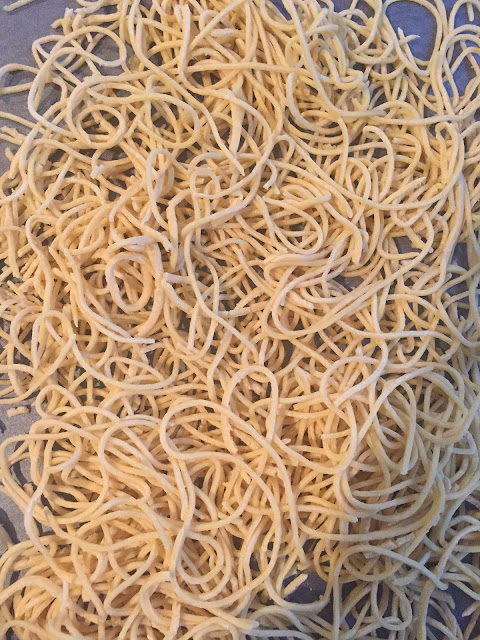Dog walks are when I do what I enjoy most, think. I think about how to get rich, how to replace my 9-to-5 with a more satisfying 9-to-5 and what things need to be baked.
I make pretzels once in a while. They're fun and always come out tasty, big crowd pleaser. I use a stiff, pretty dry dough:
water/milk (1/1) 200 g
butter 14 g
sugar 10 g
salt 5 g
unbleached white 300 g
instant active yeast 3-4 g
mix, knead and toss in fridge for about a day. Then shape, proof, toss in 5% w/v lye solution for a minute, remove, place on Silpat, sprinkle with salt and bake at 400F convection on the Silpat until they are a rich mahogany color - like fine leather (that's a Ron Burgundy reference, he's my idol).
Then I started reading more on bagels. My last run wasn't very satisfying. I use a similar dough for bagels, but after the shape and proof, I toss them in a sweetened (malt or brown sugar) pool of boiling water and bake. But I don't get the shine and tug to the exterior. I read somewhere that bagels were originally subjected to a lye dip. Are bagels just a chubby pretzel? Until I sort this complicated mess out, I decided to take a side step and make a snack while I do research. I had the desire to jam a hotdog into a pretzel (this is a reference to The Todd from Scrubs, another idol of mine "give the Todd some love!" /raises hand for high5).
Some action shots below, not much of a procedural post, just a few notes.
Chopped (Ballpark) dog tucked in to the dough.
Formed into a loop and dusted liberally with flour, allowed to ferment in fridge for a day. Side note: looking at this image sometimes produces a negative image where the parchement paper looks like a bundt pan holding the bagel dough - it's crazy!
Removed from fridge, allowed to warm for an hour to do the final proof, dipped them (with care) into a 5% w/v solution of food grade lye, scooped them out with a stainless skimmer, placed the dipped dough on a silpat, sprinkled with coarse salt and baked at 400F (convection) until brown.
Taste test (photobombed).
A lot to think about on this. Need to read about bagels vs pretzels. Probably heading toward something similar to a pizza roll next, layered pepperoni, sauce and cheese in a pillowy soft dough but still using the lye treatment on the exterior, I like the effect a lot. Thanks for all the online discussion! And thanks to @jarsloth for being brave enough to taste it. I'm hoping he's still alive.









































